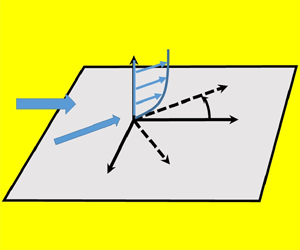Article contents
Extension of QSQH theory of scale interaction in near-wall turbulence to all velocity components
Published online by Cambridge University Press: 19 April 2021
Abstract

The QSQH theory is extended to all three velocity components taking into account the fluctuations of the direction of the large-scale component of the wall friction. This effect is found to be significant. It explains the large sensitivity of the fluctuations of longitudinal and spanwise velocities to variations in the Reynolds number in comparison with the sensitivity of the mean velocity, the Reynolds stress and the wall-normal velocity fluctuations. The analysis shows that the variation of the longitudinal velocity fluctuations with the Reynolds number is dominated by the variation of the amplitude and wall-normal-scale modulation of the universal mean velocity profile by the outer, large-scale, Reynolds-number-dependent motions. The variation of spanwise velocity fluctuations is dominated by the fluctuations of the direction of the large-scale component of the wall friction. The Reynolds number dependence of the other second moments is not dominated by these mechanisms because the mean wall-normal velocity and the mean spanwise velocity are zero. Explicit relationships between the differences in the second moments of velocity in any two high-Reynolds-number near-wall flows were derived. The comparisons gave a satisfactory agreement for the root-mean square of the wall-parallel velocity components in the range of the distances from the wall where modulation by large-scale motions dominates. Relationships between the differences of the constants of the logarithmic law, the shape of the mean velocity profile and the differences of the second moments of velocity caused by the differences in large-scale motions were derived and estimated quantitatively.
- Type
- JFM Papers
- Information
- Copyright
- © The Author(s), 2021. Published by Cambridge University Press
References
REFERENCES
- 10
- Cited by



